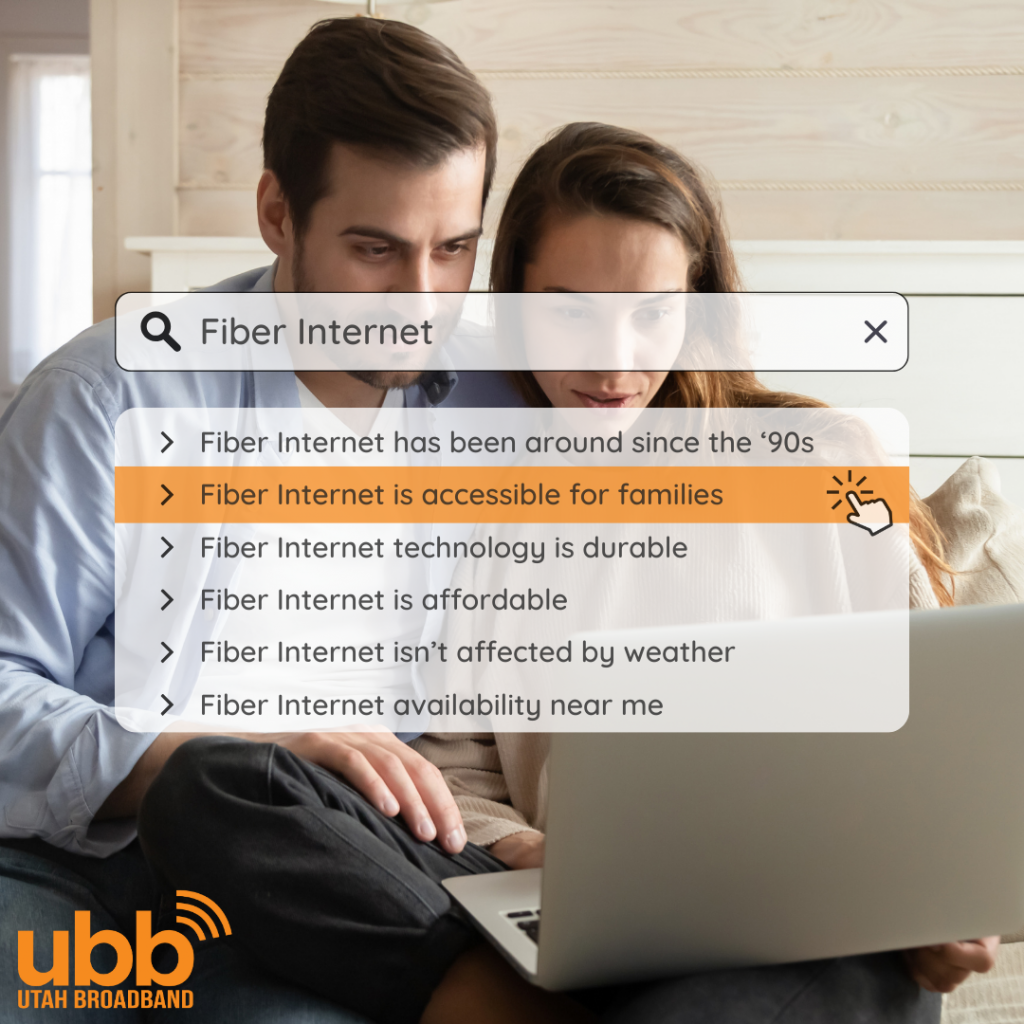When technological advances occur and are not widely understood, mistruths or myths often arise around them. Fiber Internet is no exception, as it has burst onto the scene, offering unmatched speeds. As the deployment of fiber Internet increases and knowledge grows, myths will be dispelled, and fiber will take its place, as the telephone did over 100 years ago, as the technology for the next century.
We thought we’d start early in fiber’s lifecycle to debunk the most common myths about it and shed a little light on what is the single fastest means for delivering high-speed Internet.
Myth 1—Fiber Internet Is Too New and Unproven
Fiber has been around for a long time. In the 1880s, Alexander Graham Bell first used light to deliver sound, but it wasn’t until the late 1970s that its commercial application first happened. By the late 1990s, it began to increase and became widely used commercially by major network service providers for commercial and residential use ever since.
Myth 2—Fiber Internet is Costly and Out of The Reach for Most
While fiber Internet has traditionally been more costly, its prices have recently become more competitive. The question isn’t necessarily cost, but what’s the value? When understanding the benefits and features of fiber Internet over other solutions, fiber Internet offers the best value for performance, reliability, and speed. With government support, prices have been reduced even more dramatically for lower-income families.
Myth 3—Fiber Optic Cables Are Easily Broken
Fiber optic cables are indeed made of thin glass fibers, which might lead you to think they can be easily broken. However, these fibers are protected by a buffer coating that prevents damage, and thanks to the flexibility of the cables, fiber optic technology is quite durable. The main risk of damage typically comes from accidental cuts, such as during digging.
Myth 4—Fiber Internet Is Not For Residential Use
Because of fiber’s speed, many people think it must be exclusive to commercial use. Today’s homes are increasingly filled with a range of smart devices, requiring faster uploads and downloads without significant limits on the number of devices running simultaneously. From smartphones, gaming systems, and smart televisions to computers, tablets, and even video doorbells, homeowners are demanding the speed at which only fiber Internet can deliver.
Myth 5—Weather Disrupts Fiber Internet Easily
Put simply and directly, fiber optic cables are not vulnerable to harsh weather conditions. These cables can be placed in water, so heavy rain, snow, and wind do not impact the fiber Internet’s signal strength. While storm damage may harm cables above ground, the weather itself does not affect signals like what happens with cable Internet, satellite, or even telephony.
Myth 6—Fiber Internet Is No Different Than Cable, 5G, or Other Types of Broadband Connectivity
Fiber Internet is faster and more reliable than traditional cable and telephone technology, such as coaxial cable, copper DSL, and satellite Internet. Cable providers’ coaxial-based networks cannot deliver the speeds of fiber. The old copper-based DSL telephone network was great for the early days of dial-up, AOL, and CompuServe, but it cannot compete with fiber’s capabilities today. Furthermore, satellite Internet, while great for hard-to-get-to places, is costly and doesn’t provide the performance fiber Internet can.
Myth 7—Content Is Limited Over Fiber Internet
With fiber Internet, once the service is activated, one can sign up online for all the traditional streaming services such as Disney+, Hulu, YouTube, and others to get content and even traditional broadcast programming. The same is true for gaming. And this is only getting better as more traditional content providers offer attractive streaming bundles.
Myth 8—Accessibility Is the Biggest Downside of Fiber
Let’s be honest—the biggest, and perhaps the only, downside to fiber Internet is its availability. Since it’s a newer technology, fiber isn’t accessible to everyone yet; expanding it to all areas will take time. The great news is that availability is rapidly increasing, even for existing homes, driven by growing demand. Beyond that, fiber delivers superior service compared to other options and comes with virtually no drawbacks.
Final Thoughts
Fiber Internet is becoming more widely available, and as people experience it firsthand, many common myths will fade away. It’s fast, reliable, and future-proof, able to scale quickly to meet growing bandwidth needs. As more homes become “smart,” having a stable Internet connection will be crucial for everyday living, and fiber offers the ideal solution to meet that demand. Want to learn more about Fiber Internet? Reach out to our fantastic customer support team at 801-717-2000.


